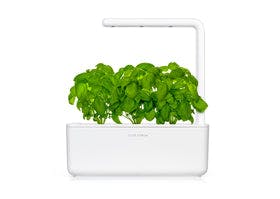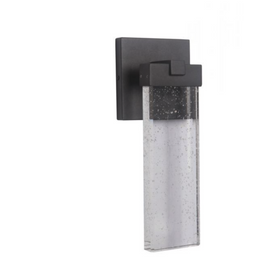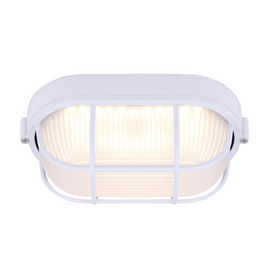- Home
How Can Vegetation and Wildlife Affect Home Buying?
Asking how current vegetation or wildlife could potentially affect home buying may seem a bit odd of a question to ask. But constructing a sustainable home or developing a homestead is only half of the climate crisis equation. The other half is the importance of the protection of biodiversity worldwide. Growing a corner of your backyard or part of your woodlot into a wildlife habitat can provide you both something to admire and a sense of security for your backyard patrons. So how do you scout a property for these natural habitats before purchasing? Look into the following topics:
- The local ecosystem
- Existing animal habitats
- Problem species
- Rare or old trees
The Property Ecosystem
Humans spend our time on land, a terrestrial ecosystem comprised of six primary ecosystems: desert, grassland, taiga, temperate deciduous forest, tropical rain forest, and tundra. Beyond that, smaller ecotones exist on the edge of where two systems meet, like when aquatic and terrestrial systems overlap to create wetlands. These zones are complete with a complex food web of plants, herbivores, carnivores, and even apex predators. Knowing what ecological systems are present on the property can influence how you choose to develop the land. Specific environmental communities, like the wetlands mentioned above, may be protected by your state or province. Suppose one of these features is present on your property. In that case, it may come with additional responsibilities, limitations, or opportunities, depending on how you approach it.
Established Animal Habitats on the Property
No matter where you move, animals will have likely already claimed portions of the yard for themselves. Whether it's the fenceline where birds perch as they look for worms or the groundhog burrow long established under the front step, animals have undoubtedly explored your property. Seeing these potential habitats and identifying them before buying will give you an idea of what you can expect when you move in. In addition, use this step to help you work with nature rather than against it in your yard. An example of this is placing flowers beneath popular bird perches to take advantage of free fertilizer. You can also use this to find areas where you may deter squirrels, raccoons, or deer from your garden.
Are There Any Problem Species Present?
Property pests come in many forms, and some are easier to spot than others. When you first look at a property, you can usually see what problem plants are present, though this only works with a bit of research ahead of time. Some examples of what someone may see as problem plants include poison ivy or poison oak. But this can also include blackberries, which spread their thorny brambles wildly, or the allelopathic eastern American black walnut, which releases chemicals that stunt nearby plants. Animal pests are harder to detect, with many feeling more comfortable traveling around at night. Some common problem species include squirrels, raccoons, deer, or even the neighborhood cat.

Does the Property Have Any Old Trees or Rare Pants to Consider Before Buying?
Requiring a bit of research ahead of time, knowing what unique plants are present on your property could affect your future design. For example, maybe your property is lucky enough to be home to the critically endangered American chestnut or the endangered butternut? Putting together a list of unique plants can guide future decision-making, prioritizing the conservation of species at a home level. This step will be more common in rural areas. The suburban property will often have carefully selected, aesthetically pleasing trees and shrubs. Still, you may be surprised at what nature brings to your flower bed or garden plot!

Soil Considerations For Home Buying
Your soil type plays a crucial part in your garden. Like all things, there are different types of soil, ranging from fine to granular particles in a mixture of sand, silt, and clay. But the earth beneath your property can also house hidden threats that, if not remediated, could cause sickness in plants and people. So what are some factors to consider when examining the soil before buying?
How Can Soil Type Affect Home Buying?
If you're buying a home with additional acreage, testing your soil is just as important as testing the house's structural integrity. You can determine soil type by measuring the percentage of sand, silt, and clay in a simple jar test. Most sites will likely be a mixture of all three, which would place the soil under one of the various loam subgroups. The closer your soil is to true loam, the better start you have for your plants when looking to grow crops. Try an test your soil before had, as the last thing you want is to expect to grow in the ground only to find your soil too compacted from clay or draining too quickly due to sand.
How Do Soil Structure, pH, and Organic Matter Affect Home Buying?
Soil pH is important when you are looking to integrate specialized plants. The typical garden plants will have a soil pH range of 6 to 7. In contrast, blueberries require more acidic soil, typically between 4 and 5. Adjusting the soil pH can be done but will be an additional expense. When a soil's pH is too high or low, it can lead to nutrient lockout, making it difficult for your plants to pull up certain nutrients to be healthy. Soils lacking in organic matter (OM) are not as efficient as those with a high OM content. Systems with increased OM act better at retaining plant nutrients and buffering pH.

How Does the Past Site Use History Affect Home Buying?
Has your home always been zoned for residential, or was it something before? By looking up the long-term history of a property or neighborhood, homeowners can begin investigating the site's origins. This information can help determine if the property is viable for what you hope to accomplish and may even make you aware of how the area has changed. For example, is the home located in an area that was only ever forested, or was there once a gas station or heating oil tank in your backyard? Knowing these things can guide your cultivation decisions and steer you towards what tests you may need to perform on your soil. If you have suspicions about soil quality, you will want to have this investigated professionally. In that case, you can hire an environmental consulting firm to do a Phase I Environmental Site Assessment (ESA), which looks at historical usage. If there is potential for contamination of soil and water, the Phase I report would recommend a Phase II Study to identify the actual state of contamination.
Once you know the history of your property, certain things may surprise you. For example, you may find that the property wasn't always as tidy as it is now. This information means it may be essential to test the site for toxicities to ensure that your garden isn't accumulating anything in the vegetables you take to your table.
What Toxicity Concerns Should You Investigate When Buying a Home?
Look for toxic accumulation of metals, especially lead, when purchasing an older house that may have had a lead-contaminated roof or lead paint in its history. If you are purchasing a farm and hoping to grow regeneratively, be sure to check for synthetic pesticides or inquire with the previous owner. These contaminants can affect soil health, reduce beneficial bacteria and insects, and make it easier for the more vigorous and invasive species to return.
Property Aesthetics
The final feature to consider before purchasing a home using the scales of permanence is the overall aesthetics or experience of the property. Aesthetic changes come at the end of this process because they consume the least energy to alter and are often relatively quick and easy to change. But that's not to say those aesthetics and the overall experience of the property aren't essential! So what are some things to consider and plan before purchasing your future property?
What Are the View Lines and Corridors of the Property?
Everyone wants a home with a view, but what other views are essential to consider. For example, how is the line of sight to a passersby? Are there any views you want to hide, like phone towers or neighboring apartments? Seeing these things ahead of time will allow you to begin thinking of managing these design challenges. A natural and long-term solution is planting something to fill that space. If you choose to grow trees to block some of these views from your home, don't forget your other home features. Tall trees can run the risk of shading your solar panels or falling onto the house in a storm if planted too close.

The Keyline Scale of Permanence, initially developed by P.A. Yeomans and adopted by Bill Mollison for Permaculture, is a helpful tool for homesteaders and homeowners alike. It doesn't matter whether you are buying to create a sustainable home with solar panels and a sealed building envelope or a thousand acres to pick up regenerative farming. Scales of permanence guide your observation, allowing you to make the most significant impacts with the least invested energy. Now that you have a step-by-step plan to look at your prospective property, which site meets your goals for a dream sustainable home?
Tanner Sagouspe
Tanner Sagouspe has a Masters in Environmental Management and is a Permaculture Designer who promotes tackling the climate crisis at home.












